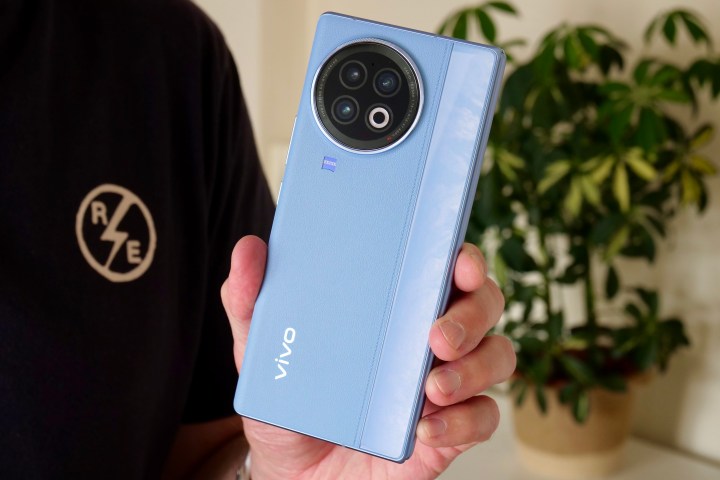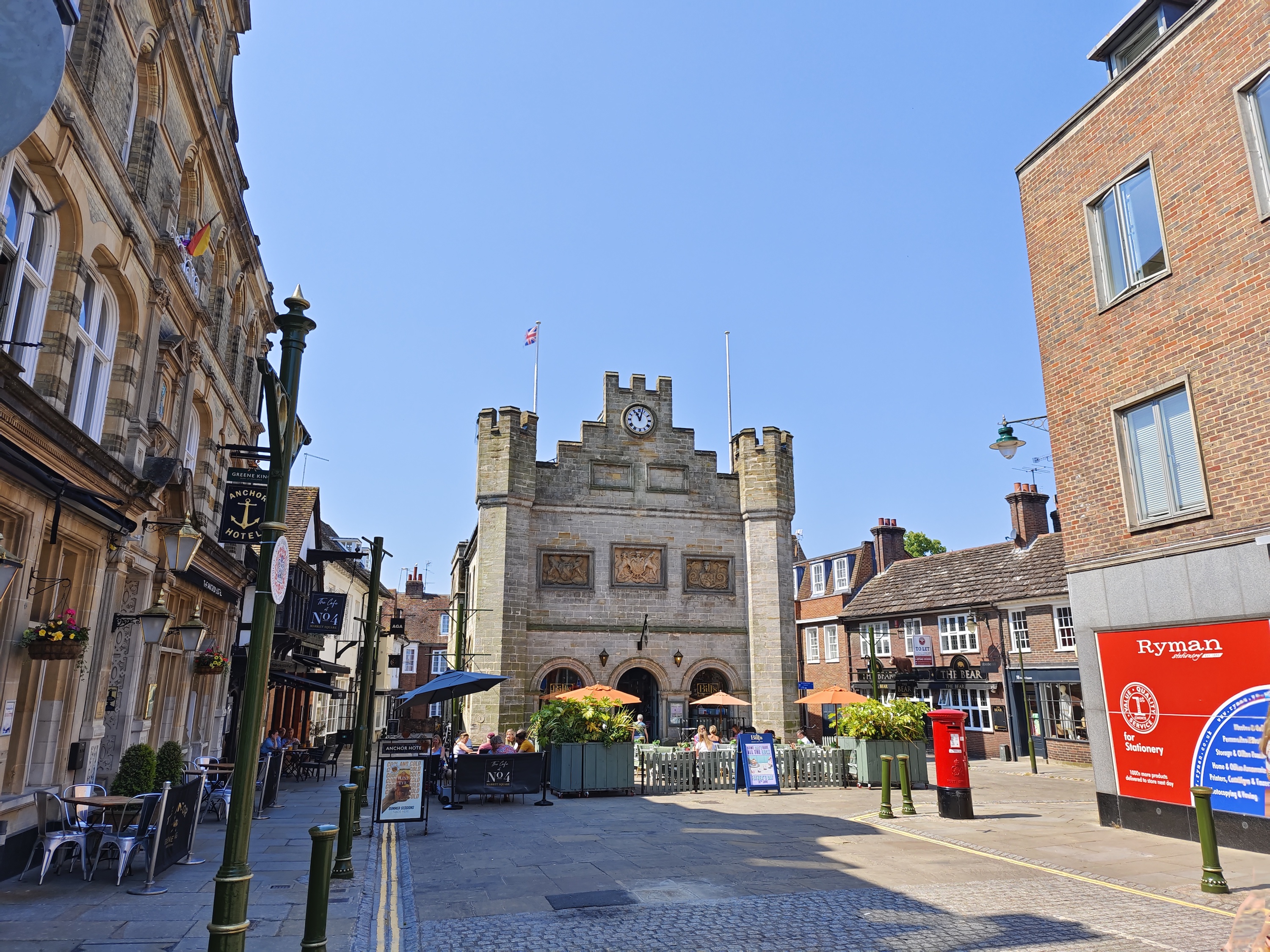
Are you, like me, frustrated by the tiny fingerprint sensors in the power key that are standard on big-screen folding smartphones? They do the job, but only just.
Well, I’ve seen the future, and it’s a vast improvement. The Vivo X Fold 2 has not one, but two in-display fingerprint sensors. They’re excellent, and now I want to see them on every foldable.
The problem with a sensor in the power button

The Vivo X Fold 2 is a folding smartphone along the same lines as the Samsung Galaxy Z Fold 4, the Honor Magic Vs, and the Pixel Fold. But unlike all of these, it has an in-display fingerprint sensor on the cover screen and the inner screen. It shouldn’t be a big deal, as non-folding phones have had this security feature for years. But on foldables, it’s unheard of, with all the above models relying on one sensor set inside the power button on the side.
They’re mediocre for two reasons. The first is the size of the sensor, as they measure just a few millimeters in width. You need to be precise with your finger or thumb for the phone to reliably unlock every time, and it’s common to try two or three times before the sensor agrees to let you use the phone. It’s frustrating and something the rest of the phone world has mostly moved past.
The second frustration is the ease with which the sensor is accidentally touched. Due to its position on the side, it’s often unintentionally brushed by your skin in the process of picking up the phone — or just by accident in your pocket or bag when it thinks you’re trying to unlock the device. Do this just a few times, and the system disables the sensor, forcing you to use your PIN or pattern to unlock the phone. Between this and the tiny, frustrating sensor itself, securely unlocking a big-screen foldable can be a pain.
The Vivo X Fold 2’s killer feature

All this annoyance is entirely avoided on the Vivo X Fold 2. I want to tell you how transformative it is, but I’m fairly sure you already know. There’s a very, very good chance you can pick up the non-folding phone you own and unlock it using basically the same in-display fingerprint sensor. You know they’re intuitive, and you also know that, for the most part, slow and unreliable in-display sensors are a thing of the past.
Vivo has placed an in-display fingerprint sensor on the cover screen at just the right height above the lower bezel, making it easy to locate and press without looking for it, and the increased thickness of the folded phone doesn’t cause problems. You can even change the shape of the icon and the animation that plays when it recognizes your fingerprint.

It doesn’t feel different from any other fingerprint sensor, but using the one on the inner screen is really like no other folding smartphone. It’s set on the right-hand side of the open screen, and I was concerned the different glass and screen protector may affect its operation. But in my experience so far, it’s as fast and reliable as the one on the cover screen.
Again, I feel I need to say how great it is to use an in-display fingerprint sensor to unlock the phone, but it also feels redundant to do so as it’s established technology. It doesn’t change the fact it’s way better than the usual side-mounted sensors on a foldable, though.
I never want to go back

Now that I’ve used the Vivo X Fold 2 and its in-display fingerprint sensors, I don’t want to go back to side-mounted sensors. I’ve learned to work around them and am used to the idiosyncrasies of the Galaxy Z Fold 4’s sensor, but I’d rather not have to deal with this on its successor, the Galaxy Z Fold 5, or any other future big folding smartphone.
If Vivo can find a way to engineer them into the X Fold 2, then I don’t see any reason why other manufacturers can’t do the same. Surely, it can’t be a cost issue, as neither version of the technology is especially new. It is possible that it’s a weight thing, as the Vivo X Fold 2 is 279 grams, which is 16 grams heavier than the Galaxy Z Fold 4, and 18 grams heavier than the Honor Magic Vs. The chassis is the same thickness as the Magic Vs too, so it seems unlikely the sensors affect the overall dimensions, but the Vivo does have slightly larger screens that could also contribute to the added weight.

It seems odd to hanker after a feature that’s on almost every other phone I’ve used over the past few years, especially when I’m talking about a flagship model that costs far more than other devices.
You’re probably thinking the same thing, but trust me: When you use it on a foldable, you’ll wonder how you went without it for so long.
Flagship foldable specifications

How about the rest of the phone? It’s a China-only device, so there’s no Google Play Store installed out of the box, but it does have a seriously high specification with a Qualcomm Snapdragon 8 Gen 2 processor, 12GB of RAM, and the massive 8.03-inch, 120Hz inner screen. Outside is a 6.53-inch 120Hz cover screen.
It also has super fast charging, with an included 120-watt wired charging block that takes the 4,800mAh battery from flat to full in just under 30 minutes, which is another trick the Galaxy Z Fold 4 can’t match. The camera consists of 50-megapixel main, 12MP 2x optical zoom telephoto, and 12MP wide-angle lenses. There are two 16MP selfie cameras onboard.
Unfortunately, in the short time I’ve spent with the cameras, they haven’t impressed in the same way other Vivo phones have, despite Zeiss’ involvement on the optics side. The main camera seems to be good, but the wide-angle struggles in comparison. You can see in the small gallery above how it isn’t consistent in different lighting conditions, often washing the scene out or getting the exposure completely wrong. It’s a shame as this is an expensive phone, and you expect both the main and wide-angle cameras to be good quality.
Should you buy one?
Vivo officially sells the X Fold 2 only in China at the moment, where it starts at the local equivalent of $1,260. It would be possible to import one if you were really keen, but expect the cost to increase if you do — though it would probably still be cheaper than the Galaxy Z Fold 4 or Google Pixel Fold. You’d just have to deal with getting Google Play on board — and possibly spotty reception as the phone is not specifically designed for use outside China.
Should you make the effort to import? The hardware is excellent, the screens are very big, colorful, and bright, plus there’s masses of power, fast charging, and those two amazing in-display fingerprint sensors. But the camera disappoints, and the software really will take some getting used to. I’d recommend waiting to see what the Galaxy Z Fold 5 delivers and how the Pixel Fold turns out before handing over any money.
However, I’d perhaps live with the slight annoyances just to never use a side-mounted fingerprint sensor again.
Editors' Recommendations
- The Honor V Purse is the most unusual foldable I’ve ever used
- Every foldable phone we’re expecting in 2024
- Mophie made one of the cutest iPhone accessories I’ve ever used
- This upcoming Android phone has a design unlike any you’ve seen before
- I’ve seen the future of smartphones, and it’s astonishing














